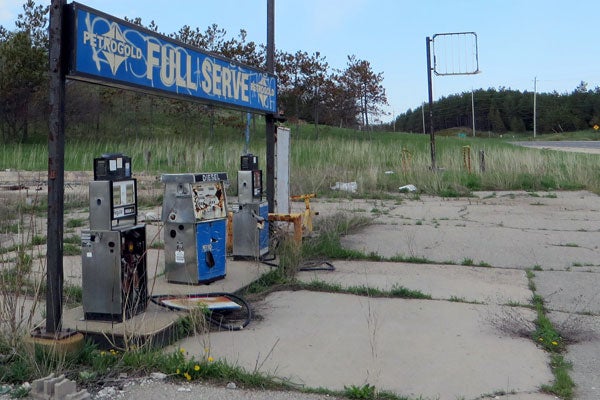
Students to work with industry and researchers to clean up contaminated sites
Published: July 4, 2014
The University of Toronto has been awarded $1.65 million from the Natural Sciences and Engineering Council (NSERC) to support student training and research in the area of environmental remediation.
Professor Brent Sleep of Civil Engineering will oversee the establishment of the Remediation Education Network (RENEW) with the funds, which come from NSERC’s Collaborative Research and Training Experience (CREATE) program.
Sleep reports that a recent publication by the Parliamentary Budget Officer of Canada estimated the cost of cleaning up 22,000 federal contaminated sites in Canada at $4.9 billion.
Contaminated sites in need of remediation include former industrial sites, rail yards and abandoned gas stations. These sites are contaminated with hazardous chemicals that may pose a risk to human health, ecosystems and the drinking water supply.
 “At the really old contaminated sites,” says Sleep (pictured right), “hazardous wastes were not properly managed, often being disposed of in unlined pits or buried in drums that eventually rusted, leaking contaminants into the environment. More recent spills have been caused by accidents like pipeline leaks and train derailments.
“At the really old contaminated sites,” says Sleep (pictured right), “hazardous wastes were not properly managed, often being disposed of in unlined pits or buried in drums that eventually rusted, leaking contaminants into the environment. More recent spills have been caused by accidents like pipeline leaks and train derailments.
“The problem with many groundwater contaminants such as chlorinated solvents is that once they’re in the ground, they stay there for a long time, because they’re fairly recalcitrant,” he says. “They’re trapped in the subsurface as pools of liquid that are slowly dissolving into the groundwater. They may also produce vapours that may be hazardous.”
The NSERC funding will support 42 master’s students, PhD students and postdoctoral fellows over six years. Many of them will attend U of T — the first cohort will be admitted for the 2014–2015 school year — and will study with Sleep or with co-investigators Professors Elizabeth Edwards and Edgar Acosta of Chemical Engineering & Applied Chemistry and Professor Barbara Sherwood Lollar of Earth Sciences. Some will attend Queen’s, Western and Waterloo Universities and study with project partners there.
At U of T and their home universities, students will conduct research into the hydrogeology, chemistry and microbiology of contaminated sites and into processes that might be used to remove the contaminants or transform them to harmless compounds.
Students will also spend 20 per cent of their time working with partner companies. RENEW has secured the partnership of seven environmental remediation companies who will provide internships for the students, giving them practical experience in site assessment and clean-up.
“The companies are interested in the research,” says Sleep, “but they are also interested in attracting qualified students who may someday work in the industry.” Currently generating $1.7 billion in revenue per year, environmental remediation is a growing sector.
Students will also be trained in skills like project management, communication and leadership, preparing them for both academic and non-academic careers.
“The CREATE program not only brings benefit to U of T in the form of student support and training,” says Professor Peter Lewis, the university’s interim vice-president, research and innovation, “it tackles some of society’s most pressing problems. In this case, we will be training students to better understand and address a critical environmental challenge from within universities and from within industry. Congratulations to Professor Sleep and his colleagues and thank you to NSERC for this investment.”
Some of the RENEW students will continue work begun by Sleep at a former petrochemical plant contaminated with a variety of chlorinated solvents, many of which are carcinogenic. At the site, a reactive form of iron was injected into the soil, where it reacted with the chlorinated solvents and transformed them into harmless components. Sleep believes this also created conditions that stimulated naturally occurring bacteria to provide additional remediation of the contaminants.
Back at U of T, Sleep and collaborators are working on understanding the chemistry and microbiology of the site so they can develop new, more effective methods for cleaning up contaminated sites.
“These spills can persist for decades if nothing is done to clean them up.”



